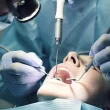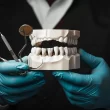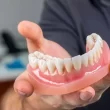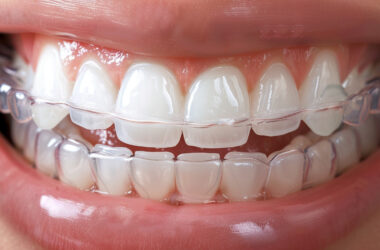Dental bridges are highly effective and a typical solution for replacing missing teeth. Dental health professionals place crowns over the natural teeth to fill gaps between two teeth. While there are various dental bridge types, the cantilever dental bridge is considered the most critical.
Usually, it’s recommended for patients with neighboring teeth on only one side of the lost tooth or teeth. Supporting the tooth structure from one side, a cantilever bridge dental mitigates the gap caused by the missing tooth or teeth.
Here’s diving into all you must know about a cantilever bridge dental, through a procedural overview to its benefits, drawbacks, and post-implant care.
Also Read: Full Mouth Dental Implants Cost With Insurance
What is a Cantilever Bridge Dental?
Also called a single-tooth bridge, a cantilever bridge is a modification of conventional bridges, such as dental implants, partial dentures, and implant-supported bridges.
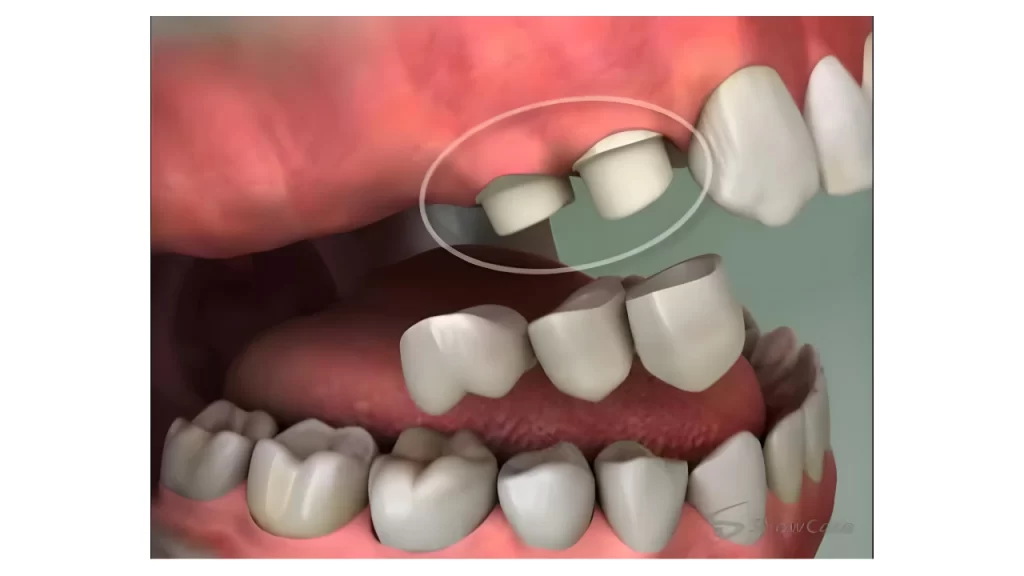
It is only recommended when the natural teeth are on only one side of the empty tooth space. Because there is a single anchor, dentists must alter a single natural tooth during the procedure. It is usually preferable in low-biting regions.
There are four main parts of all cantilever dental bridges, including:
- Dental crowns: Composed of different materials like ceramic and porcelain, dental crowns are placed on abutment teeth to hold the artificial teeth securely
- Pontic: is an artificial tooth made of ceramic, porcelain, and metal that usually replaces the missing tooth
- Abutment (supporting tooth): The abutment is a side-tooth beside the missing gap caused by the lost tooth to support the artificial tooth.
- Bridge framework: A bridge framework connects the pontic to the abutment. It offers structural stability and support to the structure.
Procedural Steps of a Cantilever Bridge Implant
Over the last ten years, cantilever bridge dentals have recorded a success rate of over 80%. Here are the steps that dental health professionals take when executing a cantilever bridge implant.
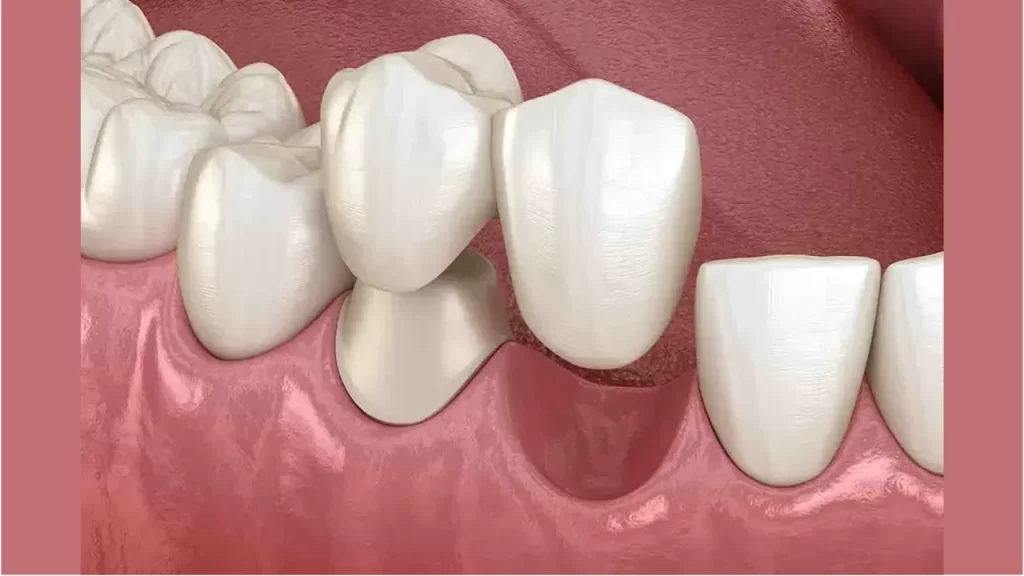
1. Initial Consultation and Diagnosis
The first step involves seeing your dental professional for an initial consultation and diagnosis. Generally, a cantilever dental bridge is the option when there’s a single (and strong enough) tooth available for support. Also, the missing tooth must be in the low-force teeth region.
2. Tooth Prep
Compared to other bridge forms, a cantilever bridge requires minimal preparation. This preparation usually involves modifying the abutment. Dentists usually eliminate parts of the tooth enamel to create space to support the pontic.
The pontic material type usually determines the extent of enamel removal. Another part of abutment prep involves strengthening the tooth structure to support the implant and the bridge to bear the implant’s weight.
3. Impression
Dentists have to record your tooth impression to fabricate a tailored solution for the patient. Depending on their choice, the healthcare provider may use the single or dual-step approach when recording the impression.
Often, the dual-step approach is preferred due to its precision. In this approach, the dentist places a prefabricated impression tray loaded with mold material in the mouth to record the impressions. They may also use oral scanners to record digital toothprints.
4. Temporary Bridge Placement
A temporary bridge protects the abutment to allow patients to perform their daily activities. While the temporary bridge is in place, a permanent bridge is being prepared.
5. Bridge Fabrication
Next, the dental lab creates an implant structure based on the recorded impression or print. It may take 7 to 14 days. Depending on the patient’s choice, the bridge is customized in various colors, materials, etc.
6. Permanent Bridge Placement
The dentist places the final bridge once it’s done. A permanent bridge is fitted and cemented into place via adhesives and other materials.
Usually, a cantilever implant takes about 3 to 6 months to heal. During this period, a bridge implant fully integrates with the bone in a process called osseointegration.
Also Read: 4 Types of Dental Implants: How to Know The Right One For You
Good and Bad Side of Cantilever Dental Bridges
Here’s all you need to know about the merits and demerits of cantilever dental bridges.
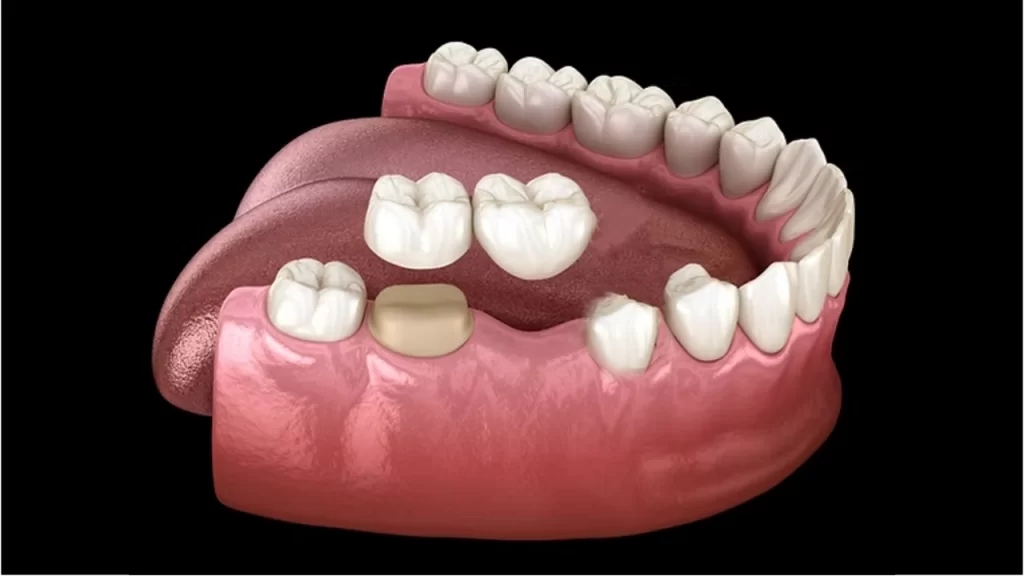
Merits
- It’s a minimally invasive procedure that demands altering the adjacent teeth and involves a single abutment.
- It is suitable for replacing a missing tooth, especially when the supportive tooth is at a single end.
- They are more cost-effective than conventional variants of implant-supported bridges.
- The pontic readily matches the existing teeth, setting up a more uniform and natural appearance.
- The straightforward procedure requires no anesthesia or other related interventions.
- Cantilever bridges are highly feasible alternatives because there’s a lower chance of infection.
- Once placed by the dentist, they can last for longer. Sometimes, cantilever bridges remain intact for 15 years.
- The replacement teeth are fixed in one place and don’t require frequent removal.
Demerits
While the benefits of cantilever dental bridges are undeniable, they hold some drawbacks that may prevent a dentist from recommending them to you. Here are some of their main demerits:
- Cantilever dental bridges are less stable than related variants, which could affect their longevity
- They don’t involve damaged bone replacement, which may lead to bone loss
- They are suitable for missing teeth with low bite pressure. However, they aren’t ideal for molars with high bite pressure.
- The single-tooth bridge relies on a single tooth/abutment for support, which raises the risk of wear.
Caring for Your Tooth After a Cantilever Bridge Dental Implant
A cantilever bridge can last up to ten years, based on appropriate care. Here are helpful tips to know about caring for implants.
Short-term Care Tips
You may experience pain, slight bleeding, or swelling immediately after the implant. Some patients also find it difficult to perform regular activities like chewing. During this period, it helps to:
- Avoid spitting or rinsing for the first 24 hours
- Concentrate on soft diets over a few days
- Apply a cold compress for pain relief
- Avoid exerting pressure on the implant region
Long-term Care Tips
Helpful care tips to care for a single-tooth bridge in the long term include:
- Brush your teeth twice daily
- Floss daily to prevent any buildup
- Use saltwater rinses or antibacterial mouthwash
- Avoid taking tea or coffee to prevent staining
- Avoid chewing on harder and stickier objects for some time
- Occasionally, visit your dentist
Also Read: What is a Dental Flipper? Know This Before Getting One
Warning Signs That Your Cantilever Bridge Implant is Affected
The following are warning signs that indicate complications with your current cantilever implant. If you find any of these signs around your mouth, consider speaking with your dentist or health professional:
- Swelling in the region
- Redness
- Throbbing pain in the arena
- Pus or blood discharge
- Painful chewing or biting
- Bad breath (halitosis)
- Loose or shifting implant
- Gum recession
How Much Does a Cantilever Bridge Dental Implant Cost?
Cantilever dental bridges have moderate prices, relative to other related options. If you’re in the United States, they range between $3,000 and $5,000, depending on various factors, including:
- Choice of implant material
- Type of crown material
- Existing abutment condition (need for bone grafting)
- Choice of the physician
- Technique for impression recording
- Your location
Conclusion
The cantilever bridge dental implant is a medical technique for replacing missing teeth. It involves using a single adjacent tooth for support, particularly for patients who don’t have strong adjacent structures on both sides of the gap caused by a missing tooth.
Since it is minimally invasive and requires no anesthesia, it is one of the most straightforward bridge dental procedures. Caring adequately for a cantilever bridge dental can help the implants last for extended periods. It always helps to follow your dentist’s instructions to the letter and avoid missing your scheduled appointment.

